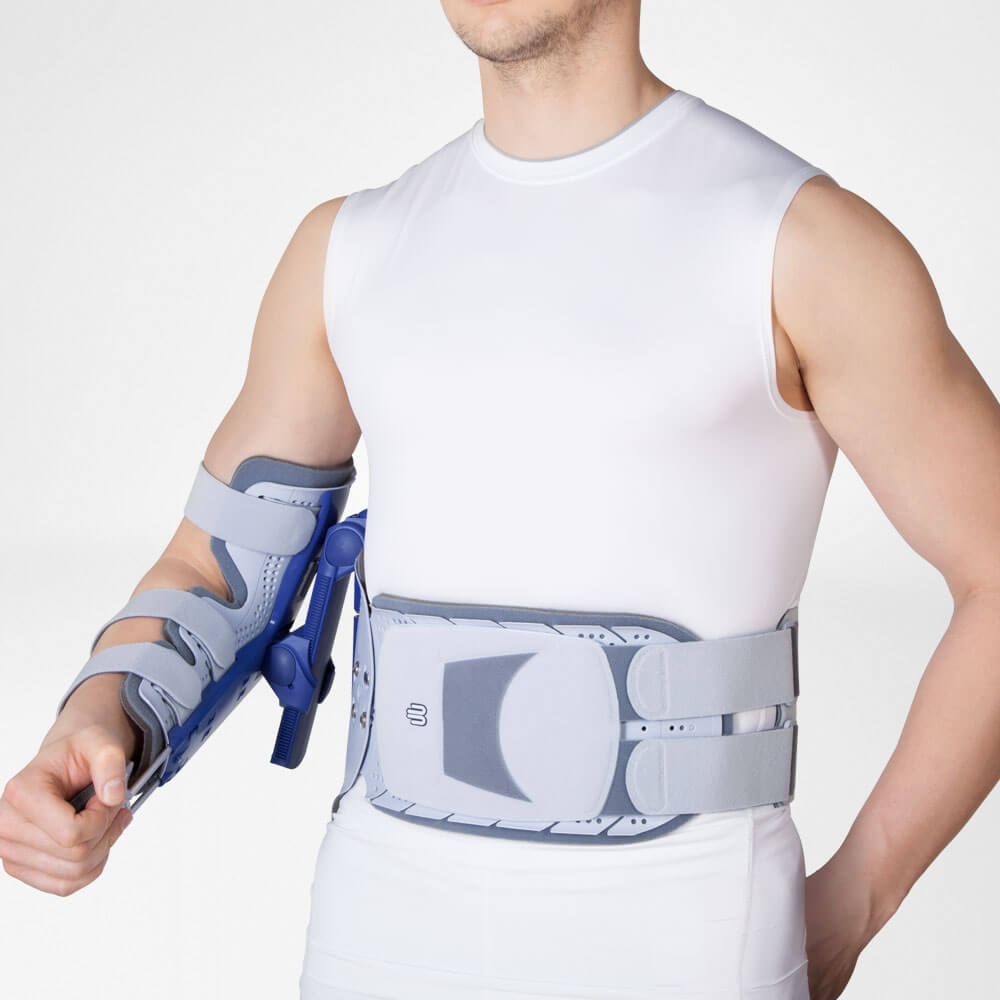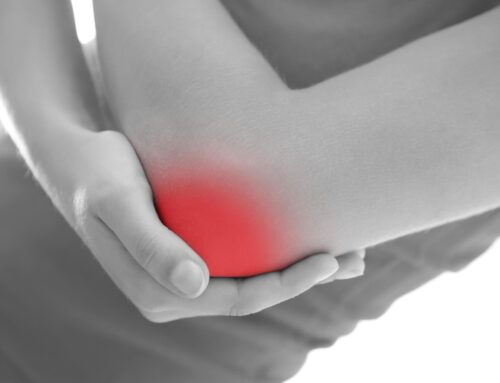A shoulder brace supports, stabilizes, and compresses the shoulder joint. It manages shoulder pain, enhances recovery from injuries, and provides stability during physical activities. By limiting excessive movement and applying targeted compression, wearing a shoulder brace alleviates discomfort and prevents further damage to the shoulder area.
The primary purposes of a shoulder brace include:
- Pain Relief: Reducing pain by providing support and compression to the affected area.
- Injury Prevention: Protecting the shoulder from further injuries by stabilizing the joint.
- Enhanced Recovery: Promoting faster healing by restricting unnecessary movement and providing consistent support.
- Improved Functionality: Allowing individuals to perform daily activities and exercises with reduced pain and improved stability.
Benefits of Wearing a Shoulder Brace
Wearing a shoulder brace offers numerous advantages that contribute to pain relief, injury prevention, and overall shoulder health. Here are some of the key benefits:
Pain Relief and Support
One of the primary benefits of wearing a shoulder brace is the immediate relief from pain and discomfort it provides. By stabilizing the shoulder joint and applying consistent compression, a shoulder brace can:
- Reduce Inflammation: Compression minimizes swelling and inflammation, common sources of pain.
- Alleviate Muscle Strain: Supporting the shoulder muscles reduces strain, leading to decreased pain and faster recovery.
- Provide Comfort: A well-fitted brace holds the shoulder in a comfortable position, reducing pain during daily activities.
Injury Prevention and Recovery
Shoulder braces are essential for both preventing injuries and aiding in the recovery process.
- Prevent Further Injury: By restricting excessive movement and stabilizing the joint, shoulder braces protect against further damage, especially during physical activities.
- Support Healing: A brace helps maintain proper alignment and support for the shoulder, promoting efficient healing post-surgery or after an injury.
- Facilitate Rehabilitation: During the rehabilitation process, a shoulder brace provides the necessary support to perform exercises safely and effectively, aiding in faster recovery.
Improved Posture and Stability
Maintaining proper posture and stability is crucial for shoulder health, and wearing a shoulder brace can help achieve this:
- Correct Posture: Posture-correcting shoulder braces help align the shoulder joint correctly, reducing the risk of posture-related shoulder pain and discomfort.
- Enhance Stability: Braces provide additional stability to the shoulder joint, making it easier to perform daily tasks and physical activities without fear of injury.
- Boost Confidence: Knowing their shoulder is supported and stable, individuals engage in activities with greater confidence and less pain.
How to Choose the Right Shoulder Brace
Choosing the right shoulder brace involves careful consideration of these factors to ensure that you get the best support and comfort for your specific needs.
Type of Injury or Condition
Your specific injury or condition is the primary factor in choosing the right shoulder brace. Different braces address various issues, such as:
- Post-Surgery Recovery: Use a brace designed for post-operative care to get maximum support and immobilization.
- Chronic Pain: Choose a brace that provide consistent compression and support for ongoing shoulder pain.
- Injury Prevention: Opt for lightweight, flexible braces to prevent injuries during physical activities.
Level of Support Needed
The required level of support varies based on the severity of the condition and individual needs:
- Mild Support: For minor injuries or mild discomfort, choose a brace that offers gentle compression and support.
- Moderate Support: For moderate injuries or chronic conditions, use a brace that provides additional stability and adjustable support.
- Maximum Support: For severe injuries or post-surgery recovery, opt for a brace that offers maximum immobilization and protection.
Material and Comfort
The material of the shoulder brace significantly affects comfort and usability:
- Breathable Materials: Choose braces made from breathable fabrics to ensure comfort, especially if worn for extended periods.
- Durable Materials: High-quality materials ensure the brace can withstand regular use and maintain its supportive properties.
- Skin-Friendly: Look for braces with soft, hypoallergenic linings to prevent skin irritation.
Size and Fit
A properly fitting shoulder brace is essential for effective support:
- Accurate Measurements: Follow sizing guidelines carefully and measure your shoulder to select the correct size.
- Adjustability: Adjustable straps and components allow for a more customized fit, enhancing comfort and effectiveness.
- Secure Fit: Ensure the brace fits snugly without being too tight or restrictive.
Ease of Use
Ease of use is an important consideration, especially if you need to put on and adjust the brace by yourself:
- Simple Application: Look for braces that are easy to put on and take off, with clear instructions or simple mechanisms.
- Adjustable Features: Braces with easily adjustable straps and closures allow for quick adjustments as needed.
- Maintenance: Consider how easy it is to clean and maintain the brace, as this affects long-term usability.
Types of Shoulder Braces
Each type of shoulder brace provides unique benefits and addresses specific shoulder conditions.
Custom Made Shoulder Braces
Custom made shoulder braces fit an individual’s unique anatomy and specific needs. These braces offer the highest level of support and comfort because they are designed based on precise measurements and medical requirements. They are ideal for:
- Severe Injuries: Providing maximum stabilization and support for severe shoulder injuries or post-surgical recovery.
- Chronic Conditions: Offering long-term relief and support for chronic shoulder conditions.
- Personalized Fit: Ensuring a perfect fit that caters to individual needs, enhancing both comfort and effectiveness.
Adjustable Shoulder Braces
Adjustable shoulder braces are designed to provide flexible support that can be customized to the user’s preference. These braces feature adjustable straps and components, allowing for modifications in the level of compression and support. They are suitable for:
- Variable Support Needs: Adjusting the level of support as needed for different activities or stages of recovery.
- Moderate Injuries: Offering adaptable support for moderate shoulder injuries or conditions.
- Ease of Use: Allowing for quick and easy adjustments to achieve the desired fit and comfort.
Compression Shoulder Braces
Compression shoulder braces are designed to apply constant pressure to the shoulder area, helping to reduce swelling, improve blood flow, and alleviate pain. These braces are beneficial for:
- Inflammation Management: Reducing swelling and inflammation in the shoulder joint.
- Pain Relief: Providing consistent compression to alleviate pain and discomfort.
- Injury Recovery: Enhancing blood circulation to promote faster healing and recovery.
Posture Correcting Shoulder Braces
Posture correcting shoulder braces are specifically designed to help maintain proper shoulder alignment and posture. These braces are ideal for individuals who experience posture-related shoulder pain or discomfort. They are effective for:
- Posture Improvement: Correcting poor posture and aligning the shoulder joint properly.
- Preventing Posture-Related Injuries: Reducing the risk of injuries caused by poor posture.
- Daily Use: Providing support during daily activities to maintain proper posture and shoulder alignment.
Premium Shoulder Braces
At Care-Med LTD, we offer a selection of premium shoulder braces designed to provide the highest level of support, comfort, and effectiveness. Our range includes some of the most advanced and trusted products in the industry, each tailored to meet specific needs and conditions.
OmoLoc®

OmoTrain®

OmoTrain® S

SecuTec® Omo

Achieving Shoulder Comfort and Support
Choosing the right shoulder brace is am important step towards achieving effective pain relief, preventing injuries, and ensuring a speedy recovery. A well-selected shoulder brace provides essential support, stability, and compression, allowing you to engage in daily activities with confidence and comfort. Whether you are dealing with a chronic condition, recovering from an injury, or seeking to improve your posture, the benefits of wearing a shoulder brace are undeniable.
If you are uncertain about which shoulder brace is right for you, contact Care-Med LTD for personalized care and expert guidance. Let us help you on your journey to recovery and improved shoulder health.
Share This Story, Choose Your Platform!
Table of Contents
We specialize in orthotics, body braces, and compression wear tailored to your unique needs in Toronto. Reach out to us at info@caremed.care or call 416-782-5353 to book your fitting and consultation.
Experience the difference of customized solutions designed just for you.











